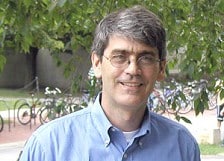A Closer Look: James Bushnell

.floatimg-left-hort { float:left; } .floatimg-left-caption-hort { float:left; margin-bottom:10px; width:300px; margin-right:10px; clear:left;} .floatimg-left-vert { float:left; margin-top:10px; margin-right:15px; width:200px;} .floatimg-left-caption-vert { float:left; margin-right:10px; margin-bottom:10px; font-size: 12px; width:200px;} .floatimg-right-hort { float:right; margin-top:10px; margin-left:10px; margin-bottom:10px; width: 300px;} .floatimg-right-caption-hort { float:left; margin-right:10px; margin-bottom:10px; width: 300px; font-size: 12px; } .floatimg-right-vert { float:right; margin-top:10px; margin-left:10px; margin-bottom:10px; width: 200px;} .floatimg-right-caption-vert { float:left; margin-right:10px; margin-bottom:10px; width: 200px; font-size: 12px; } .floatimgright-sidebar { float:right; margin-top:10px; margin-left:10px; margin-bottom:10px; width: 200px; border-top-style: double; border-top-color: black; border-bottom-style: double; border-bottom-color: black;} .floatimgright-sidebar p { line-height: 115%; text-indent: 10px; } .floatimgright-sidebar h4 { font-variant:small-caps; } .pullquote { float:right; margin-top:10px; margin-left:10px; margin-bottom:10px; width: 150px; background: url(http://www.dmbusinessdaily.com/DAILY/editorial/extras/closequote.gif) no-repeat bottom right !important ; line-height: 150%; font-size: 125%; border-top: 1px solid; border-bottom: 1px solid;} .floatvidleft { float:left; margin-bottom:10px; width:325px; margin-right:10px; clear:left;} .floatvidright { float:right; margin-bottom:10px; width:325px; margin-right:10px; clear:left;}
What will you be doing as the Chair in Energy Economics?
It is kind of more a general energy portfolio. We will try to develop a research program within the (economics) department that focuses on all sorts of energy topics.
And what about as director of Iowa State’s Biobased Industry Center (BIC)?
It is more of an interdisciplinary center, and its mission is to kind of integrate the knowledge of different kinds of stakeholders that are involved in bioindustries at all different kinds of levels, including consumers, producers and some processors.
What will be the biggest challenge you will face?
There is a lot of hype about a lot of different alternative energy sources and really policies pushing those sorts of things. So trying to kind of sort through the hype and the optimism or pessimism of different types of things and trying to kind of apply a reasoned set of analytical tools to try to really set up a system that is going to sort through all these possibilities.
What is your main goal?
Institutionally, what I would really like to see both the chair and the center kind of develop into is being a real destination place where people from different segments of the industry can really swap war stories and in formal and informal kinds of ways start talking to each other. That really generates a lot of ideas research-wise and in terms of policy.
What is it about casual conversation that often springs the best research ideas?
People have important things that need to get done and they are kind of focused on it, but if you get in the habit of talking to other people working on slightly related but different things, you are kind of almost forcing yourself to do it because you are busy, but if you get in the habit of doing that, you start to realize the commonalities.
What do you hope to accomplish in your research on carbon emissions cap-and-trade policies?
One important set of policy questions are, how do we set up this market so that it does the kinds of things that we want it to do? We want it to lead to a reduction in carbon emissions, but to do it in a way at the lowest cost possible and in the most efficient way. Environmental markets are designed to do that sort of thing, but there are all sorts of aspects of the rules of these markets that can lead to unintended consequences.
Is there an area that you hope to make an impact in?
I’ve actually been involved in policy-making in a pretty detailed way for a long time. I think I can count my victories more in terms of preventing what I would consider to be really stupid ideas, which is a pretty important task, than in forcing really positive change.
Is there a policy out there that you think we should be careful of?
I think the general policy that one has to be careful about is picking technology winners from the government’s perspective, and trying to exclude other possibilities that might emerge on their own if not for so many resources being thrown at this or that technology that happens to be a fad of the policy-makers at the time.
Is there an accomplishment that you are most proud of?
Some of the work that I am most proud of has to do with trying to understand what makes power markets and electricity markets work and what causes the kinds of problems (experienced) during the crisis in California 10 years ago. I was involved in a quasi-regulatory role, so this is almost a personal issue to me. And some of the ideas and lessons that we have learned from California have been slowly disseminating throughout the world really.
What was it like being in the middle of that California energy crisis?
It was some of the first work I did in academia, and so it was almost a strange initiation in the fact that I was thrown in the middle of a crisis that was in the newspapers every day. And with $15 billion on the line in one direction or the other, it is quite an adrenaline rush that when you back away from it, you realize: OK, what happens next?








